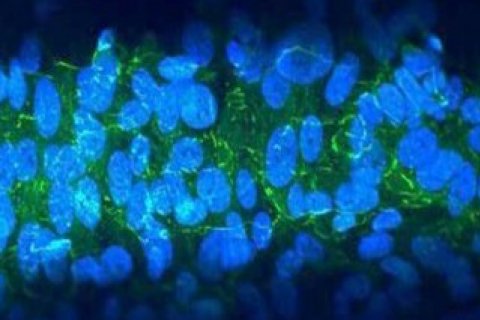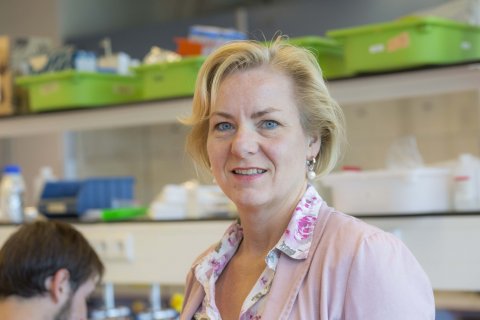Development of bioartificial kidney a major step closer
Researchers from the universities of Utrecht and Twente achieve ‘Proof of principle’
Researchers from Utrecht University and the University of Twente have demonstrated that multiple ‘living membranes’ from kidney cells can be combined into a functioning whole which does not trigger a rejection response. This brings the development of a functional bioartificial kidney a major step closer. The researchers presented the results of their research last month at the world’s largest nephrology conference, ASN Kidney Week 2016 in Chicago. The news generated significant interest from US media.

For millions of patients with kidney failure, a bioartificial kidney would mean no need for dialysis or kidney transplantation. A key requirement for a tool of this type is the formation of a sufficiently large ‘living membrane’: a dense layer of living kidney cells on an artificial membrane surface. The Dutch researchers have now demonstrated that it is possible to combine the bioartificial renal tubules which they have developed into a single large living and functioning membrane.
Successful development
The Dutch researchers produced a single functioning renal tubule for the first time last year. They did this by growing immortalised epithelial cells from human kidney tissue on hollow polyethersulfone fibres. In their recently presented research they demonstrate that it is possible to combine three of these renal tubules into a single working whole.

Further upscaling
Human kidneys are made up of hundreds of thousands of renal tubules. Nonetheless, the combining of three bioartificial renal tubules is an important proof of principle. "Our research indicates not only that combining renal tubules works but also that no rejection response occurs under laboratory conditions. So we can now take steps to upscale the system further. That’s why it’s such a significant result" explains Professor Roos Masereeuw from Utrecht University.
Other bioartificial organs
The research is also relevant for the development of other bioartificial organs, such as a bioartificial liver or pancreas, and for organs on a chip, says Masereeuw. "This involves many of the same challenges, so the insights we have gained and the strategies and methods we have used should help accelerate this research, too."
Roos Masereeuw
Roos Masereeuw is Professor of Experimental Pharmacology at Utrecht University. She conducts fundamental research into kidney function and uses the results to develop new treatments which remove toxins from the blood. Masereeuw expects the development process to be gradual: first a (significantly) improved dialysis technique based on kidney tissue, then a portable artificial kidney and, ultimately, an implantable artificial kidney. She collaborates on this with, amongst others, Dimitrios Stamatialis, Professor of Biomedical Membranes and (bio)artificial organs at the University of Twente.

